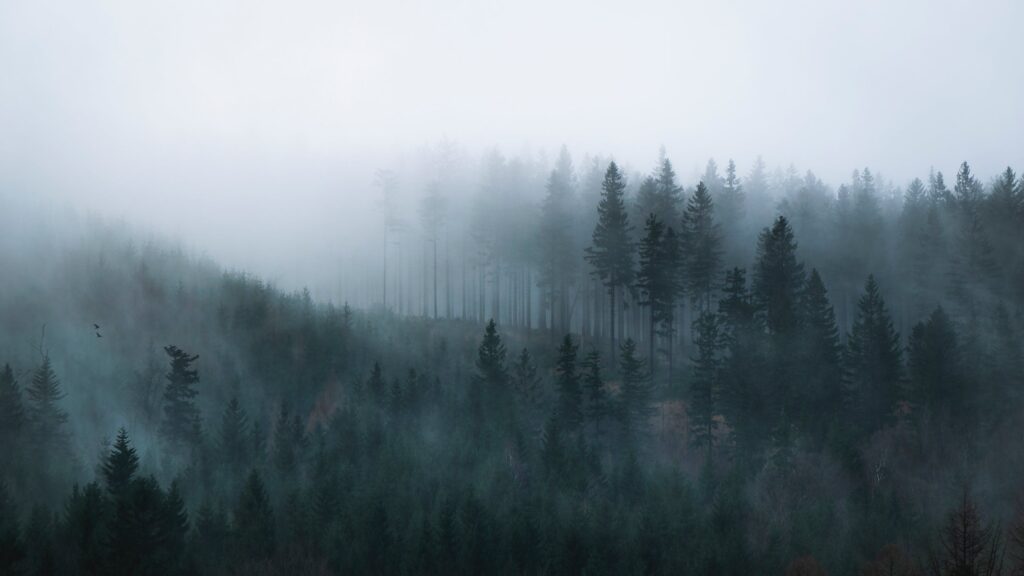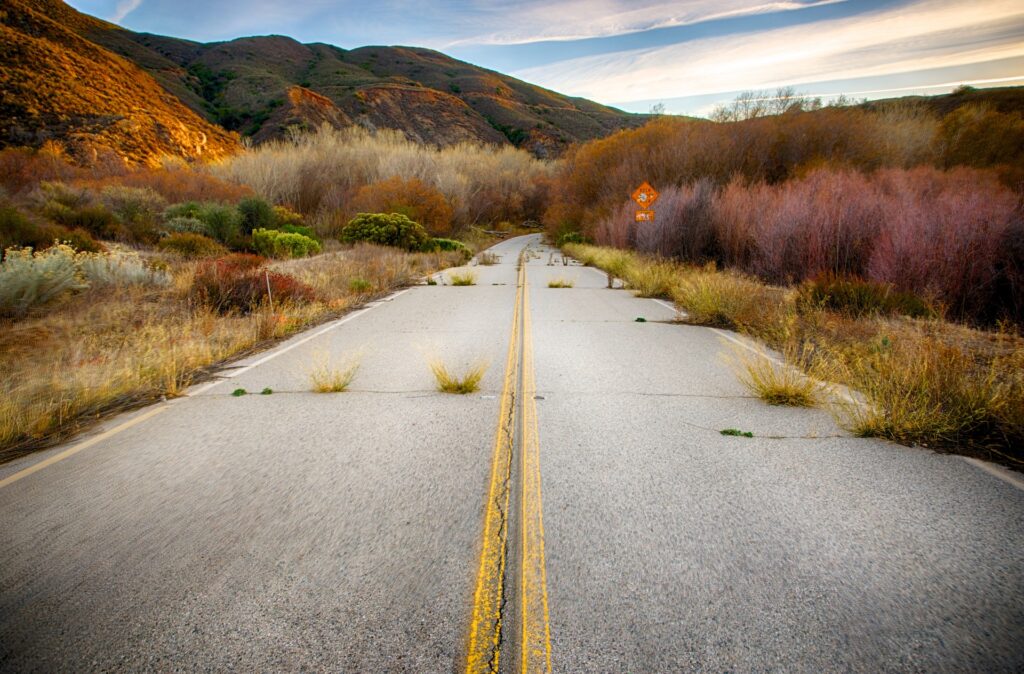Most popular articles for January 2024:
In a previous article, I offered some post-apocalyptic world building tips for fiction writers. That was sort of a high-level guide with general tips, strategies and considerations.
With this article, I want to drill down on the concept of descriptive writing. Specifically, I’ll offer some ideas and suggestions to help you describe a post-apocalyptic world in a short story or novel.
Describing a Post-Apocalyptic Setting in Fiction
When you write post-apocalyptic fiction, you have the opportunity the erase the old world order and create something new.
Maybe you’ll describe a barren “nuclear winter” kind of setting, as in Robert McCammon’s Swan Song. Or maybe you’ll create a kind of post-apocalyptic utopia where plants and animals, no longer restrained by human encroachment, thrive and flourish like never before, as in Richard Jeffries’ After London.

You’re the creator. You have a blank slate to work with. That’s what lures a lot of writers to post-apocalyptic fiction in the first place.
But no matter what kind of story you tell, you can improve it through the power of description. You can describe your post-apocalyptic setting in a way that paints a picture in the reader’s mind. By doing so, you’ll pull the reader deeper into the story — and keep them turning pages.
Here are some time-tested tips, ideas and suggestions for describing your post-apocalyptic world.
1. Create a reference document (or poster) for consistency.
Have you created a reference document and/or poster for your fictional setting? If so, you’re ahead of the class and may skip ahead to the next section. If you haven’t, now is the time to start.
The idea here is simple. You create a document or poster to compile important details about the post-apocalyptic world you’ll be describing. You don’t necessarily have to use all of those details in your story. But you need to know them. Before you can describe a post-apocalyptic setting in your writing, you have to see it in your mind.
This technique can improve your descriptive writing in several ways. It’s a kind of brainstorming technique, which means it helps generate ideas for your story. More importantly, it helps you remain consistent with your descriptions and other details.
I’m a fan of posters, myself. When I was writing The Holdbacks, the first book in my ongoing post-apocalyptic series, I had to describe an enormous high school. Most of the story takes place inside the school, with students moving from one area to another in survival mode.
I found it nearly impossible to hold that setting in my mind, with imagination alone. Too many classrooms, hallways, practice fields and parking lots. So I created a blueprint poster to keep myself straight (see photo).
This is a simple example. The Holdbacks begins in the “regular world,” as the apocalypse is unfolding. So I didn’t have to do much world-building.
If you’re going to recreate civilization in your story, you’ll need to include more information in your reference document or poster. You might have to draw a map to keep yourself oriented. You might have to research (or conceive) native flora and fauna, climate conditions, geographical features, etc.
The idea here is to get all of this information down in one place, so you can easily refer to it when describing your post-apocalyptic setting and world. Consistency is key.
2. Describe select details and let the reader fill in the rest.
When it comes to descriptive writing, details matter. They paint a picture for the reader, allowing them to become fully immersed in the story.
But you don’t have to paint the entire picture for your readers. In fact, it’s probably better if you don’t. It’s often better to sketch in a few lines, and let the reader take it from there.
For example, let’s assume you’re describing a city that has been destroyed by fire, an important setting in your post-apocalyptic story. Instead of describing every little detail of the buildings, the streets, and the gray skyline, you could make a few broad brush strokes.
You might write something like:
The buildings stood like charred logs, some of them leaning precariously. The pavement below was cracked and crumbling. Even now, after all this time, ash still drifted through those streets.
Just three sentences, and we have a pretty clear picture of what this place looks like. We can then fill in the rest with our imagination, conjuring the scene in our own way.
When it comes to descriptive writing, sometimes less is more.
3. Feel free to get poetic — once in a while.
When describing a scene or setting, you might find yourself using poetic language. If that happens, I would encourage you to embrace it … but sparingly.
Novels and short stories are very different from poems. But sometimes they can overlap, even if only for a sentence or two.
When you think about it, it makes sense to use poetic techniques when describing a post-apocalyptic world, scene or setting. Poetry is all about expressing an idea or portraying an image with the fewest words possible. It packs a punch and gets to the point. These are good traits for descriptive writing in general, and for post-apocalyptic fiction in particular.
Here’s a passage from Cormac McCarthy’s Pulitzer Prize-winning novel The Road, where the protagonist sees some kind of animal in a cave:
And on the far shore a creature that raised its dripping mouth from the rimstone pool and stared into the light with eyes dead white and sightless as the eggs of spiders. It swung its head low over the water as if to take the scent of what it could not see. Crouching there pale and naked and translucent, its alabaster bones cast up in shadow on the rocks behind it.
Eyes dead white and sightless, like spider eggs. Alabaster bones. There’s a lot of poetic writing in this brief passage. But it’s still prose. It’s a novel, not a poem.
So feel free to employ this technique, if your instincts lead you there. Just do so sparingly. If you get poetic too often in your short story or novel, you’ll wander into purple prose territory. And that kind of writing gets tiresome after a while.
4. Describe beauty, when and where you find it.
Many post-apocalyptic stories have a dark and heavy tone, especially those where the catastrophic event(s) happened recently. Even the word “apocalypse” spells doom and gloom. It refers to an event involving destruction or damage on a catastrophic scale.

But it can be all bleakness, all the time. That becomes wearying.
The best post-apocalyptic novels offer a ray of light once in a while, something to give the characters hope. Because guess what? When the characters can envision a better world, so can the reader. And that will keep them engaged and curious.
On the other hand, if the world is nothing but doom and gloom, with not even a spark of light at the end of the tunnel, readers have less reason to continue the story.
In fiction, beauty can take many forms. One character helping another. A sunrise after a hard night. Nature reestablishing itself. Hope. Love. Friendship. Find a home for these things in your fiction, and you’ll make it more engaging for the reader.
5. Study post-apocalyptic movies with good setting and cinematography.
Descriptive writing in fiction starts in the real world. We see and hear things every day of our lives, and our brain files them away. This happens subconsciously. When describing a scene or setting in your post-apocalyptic story, you draw upon these memories — sometimes without even realizing it.
So your next task (and clearly the easiest one on this list) is to feed your mental library with visual imagery. And you can do this just by watching movies! Specifically, you want to watch post-apocalyptic movies with good cinematography, like the ones listed below.
Here are some movies to start with, and the scenes that might offer inspiration:
- 28 Days Later (2002) — The scenes of an empty and silent post-apocalyptic London. The pastoral moment when the characters observe some galloping horses. The country mansion that becomes a military compound.
- A Quiet Place (2018) — The early scenes that show the family walking silently through a small town, and then through the quiet woods.
- Escape from New York (1981) — The scenes where Snake Plissken goes into Manhattan to rescue the President.
- I Am Legend (2007) — The scene showing Robert Neville in the streets of Manhattan. (Side note: What is it with Manhattan and post-apocalyptic movies?)
- The Matrix (1999) — The scenes that occur outside the Matrix, where it shows a world controlled by machines and artificial intelligence.
- The Road (2009) — Every scene in the movie. And read the book, too!
- The Road Warrior (1981) — The scenes involving the walled and fortified “oil town.”
- Snowpiercer (2014) — The frozen wasteland outside the train, and the caste-based dystopia inside the train.
I hope this article helps you create vivid descriptions in your post-apocalyptic story or novel, and I wish you all the best. Keep writing!
